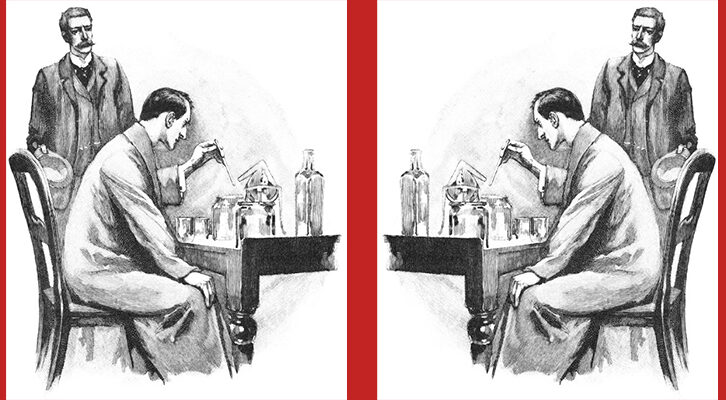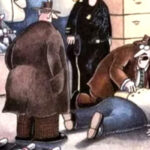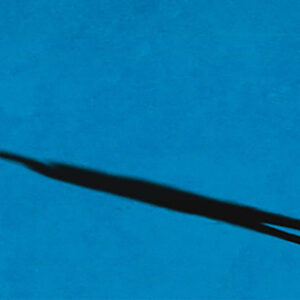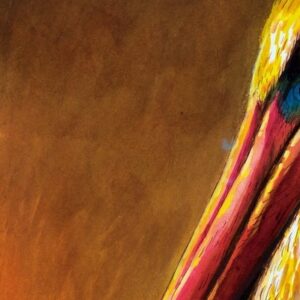
The Origin Stories of 21 Indie Presses
Superhero Small Publishers and Their First-Ever Books
It’s hard to keep track of all the small and independent presses that come and go in the literary world. Whether they’re devoted to groundbreaking poetry, new queer voices, or experimental fiction, small and indie presses work hard to bring fantastic titles to the literary landscape. From award-winning indies like Graywolf and Copper Canyon, to the fresh crop of young presses like Yes Yes Books and Topside Press, every press begins with just one book. It can start at a kitchen table or at a pinball machine. Here are the origin stories for 21 of our favorite small presses and the books that started it all.
AKASHIC, 1997

The Fuck-Up, Arthur Nersesian
Origin story: “A friend of cofounder Johnny Temple discovered a self-published edition of the novel. Arthur’s distribution efforts often relied on him walking into stores and just sneaking copies onto bookshelves. At the time, the company was more of an indie record label, but on a whim the three cofounders decided to try book publishing as well, and luckily Arthur was up for giving a new company with no publishing experience a chance. The book was a hit for Akashic, selling through three printings before we licensed it to MTV Books who sold well over 100,000 copies. We seem to do very well when we have the word “Fuck” in our book titles. Over a decade after The Fuck-Up, we published another hit, Go the Fuck to Sleep by Adam Mansbach and Ricardo Cortes. This humorous gift book for parents continues to be our biggest seller, four years after its release.” –Johanna Ingalls, Managing Editor
HANGING LOOSE PRESS, 1972

Living Space, Ron Schreiber
Origin story: “We had no intention of publishing books in the beginning. The magazine was enough work, and all in our spare time, of course. But Ron Schreiber, one of our original editors, asked if we would publish his first book, and we did. We thought of it as a one-off, but as we continued to discover exciting new writers, we thought, Somebody ought to do a book. And then we thought, Hell, these are our writers: we’ll do a book. So we published four titles in 1975 and we’ve been at it ever since, about 225 titles so far. We published Ron’s book because we liked the poems, of course. And he was our friend. Also, there was quite a bit of gay content and that made it not so easy for a writer to get a publisher in 1972.” –Robert Hershon, Co-Editor
YES YES BOOKS, 2011

Please Don’t Leave Me Scarlett Johansson, Thomas Patrick Levy
Origin story: “It was the first in our Vinyl 45 chapbook series. It is a hand-sewn book, something we haven’t done since then. The cover was a design collaboration between me and Ghangbin Kim. Four years later our interior designs and most of our cover designs are done by the great and magical Alban Fischer. Thank goodness for forward progress! Thomas was set to publish his first full-length collection with us in 2012 but he had this beautiful chap manuscript and I wanted it to have a separate life from the full book. It is prose poetry which was getting very little play in the poetry world four years ago. We are always searching for what excites us whether it is in traditional or experimental forms. You can hear a human heart beating in this collection. That is something we are always looking for.” –KMA Sullivan, Publisher
FUTURE TENSE BOOKS, 1990

Words of Eternal Chaos, Kevin Sampsell
Origin Story: “The first thing I published was a chapbook of my poems called Words of Eternal Chaos. I don’t think I have any copies of my own anymore. I was very naive and my first chapbooks are kind of embarrassing to me now, but you have to just start somewhere. I did a lot of stapling in my kitchen. The first chapbook that wasn’t by me: I was living with this guy Michael Walsh and I think I was snooping in his room for something and I found a bunch of his poems, all typed from a typewriter. I really loved them and I ended up publishing two of his chapbooks. I think it reflects the DIY attitude that I’ve always liked, and also the fact that things can be chaotic and fun and it doesn’t have to be perfect. Perfect is kind of boring.” –Kevin Sampsell, Editor and Publisher
SEVEN STORIES PRESS, 1995

And Dreams Are Dreams, Vassilis Vassilikos
Origin story: “The prior ten years, John Oakes and I had been running Four Walls Eight Windows. I had reissued Z by Vassilis Vassilikos there, so when the partnership disintegrated and John and I were each continuing on our own it just happened that this new book by Vassilis was first out the gate. I love the title and everything about the book, including the cover, a painting of a boat at sea by Arthur Levine. It was a good luck charm. That new beginning does say something about the identity of Seven Stories: sometimes the bravest thing you can do is just to embrace things that happen.” –Dan Simon, Publisher
COFFEE HOUSE PRESS (born Toothpaste Press), 1971

Tilt, Dave Morice
Origin story: “Allan [Kornblum] had been publishing Toothpaste Magazine since August 1970. He printed a pamphlet of his own poems as his project for the Intro to Typography Class at the U of Iowa. The first Toothpaste Press book was a mimeographed book, Tilt by Dave Morice which appeared in 1971. Dave was a good friend, and he and Allan shared a love for pinball as well as poetry. Dave’s Rapidograph drawings were sprinkled throughout. The book sold for $1. As I said, Dave and Allan were pinball friends, and we would all meet at the Mill Restaurant after I got off work from my waitress job. I had a pocket full of quarters from tips, and these bought hours of entertainment for all of us.” –Cindra Kornblum (wife of Allan Kornblum)
SIBLING RIVALRY PRESS, 2010

Burnings, Ocean Vuong
Origin story: “I met Ocean at a memorial for our mutual mentor, John Stahle. John published the literary journal Ganymede: Gay Men’s Culture from New York, which featured very early work from both Ocean and myself. When John died, we were both involved in a reading in John’s memory, and I offered Ocean a contract on the spot. Burnings, which is now out of print, announced who we were, what we intended to publish, and what we wanted to do to the literary landscape of this country. Change it. Five years later, we’ve won Lambda Literary Awards in both Gay Poetry and Lesbian Poetry and we’re still going strong. [Ocean’s] Night Sky With Exit Wounds is forthcoming from Copper Canyon Press in 2016. When that book comes out and wins all the awards, no one will cheer louder for him than me.” –Bryan Borland, Publisher
SARABANDE BOOKS, 1996

The Lord and the General Din of the World, Jane Mead
Origin story: “We ran our first literary contest in 1995, received 1,890 submissions in duplicate, pared them down to 30, sent them to Phil Levine our first judge of the Kathryn A. Morton Poetry Prize, and he selected Mead’s book. Actually, he had a tough time choosing between it and one other, which we ended publishing as well. The recycling folks came by to pick up the rest of the submissions—literally two tons of paper. We learned a lot that first year! Jane’s book took on the risky subject of addiction long before it became de rigueur. The language was gorgeous and searingly honest. That fit nicely inside the idea of a Sarabande: elegant surface with a wild underside. The dance, after all, originates in an Aztec mating ritual.” –Sarah Gorham, Publisher and Founding Editor
A STRANGE OBJECT PRESS, 2013

Three Scenarios in Which Hana Sasaki Grows a Tail, Kelly Luce
Origin story: “When we were first starting the press—in the first week, before we incorporated or even had a website—we drew up a list of 50 writers we deeply admired and knew that we wanted to work with. One of those writers was Kelly Luce, whose offbeat short fiction we had published when we worked at a literary magazine together. She sent us a wonderful manuscript of stories and signed with us within three months of the press being founded. In a serendipitous turn of events, she had just moved to Austin, where we’re based. The book has an unaffected tenderness about it; it offers up a lot of hope in its stories, and that is a rare thing. We felt Hana Sasaki was the perfect first book for us. It remains representative of one type of book that we want to publish—a lively, engaging fiction debut.” –Jill Meyers, Co-director
TIN HOUSE, 2003

Low Down: Junk, Jazz, and Other Fairy Tales from Childhood, A.J. Albany
Origin story: “Our first book was a gritty memoir by A.J. Albany about growing up with her father, the jazz pianist Joe Albany. Joe played with some of the jazz greats, but he struggled with heroin addiction and Albany was often left to fend for herself in seedy motels that served as their temporary homes. Albany had published an essay about life with her father in Tin House magazine in 2001. The idea of expanding the work into a full-length memoir was one of the catapults for creating Tin House Books. From the start, our intention was to publish work that grows out of or is in the same vein as that of the magazine. We also made a commitment to working with first-time authors and to work closely with all of our authors on developing a manuscript. Low Down was a great first book to start us on that path.” –Meg Storey, Editor
PEEPAL TREE PRESS, 1985

Backdam People, Rooplall Monar
Origin story: “The idea for Peepal Tree began in the ruins of the former Lusignan sugar estate on the East Coast Demerara in Guyana in 1984, where founder and Managing Editor Jeremy Poynting was watching his friend Rooplall Monar acting out several of the stories he had written. In Guyana at that time there was no paper to be had, even smuggled, and Rooplall despaired of his book ever seeing the light of day. Jeremy volunteered to organize the printing of a small run back in England. The book was ‘typeset’ on a daisywheel printer and printed in the evenings at the college where he worked. Our goal is always to publish books that make a difference, that give us distinctive voices and show a degree of originality—Backdam People definitely fits that bill!” –Hannah Bannister, Operations Manager
COPPER CANYON PRESS, 1973

Badlands, Gerald Costanzo
Origin story: “While that first book was a long time ago, I did unearth this passage of an interview with Copper Canyon Press Co-Founders Tree Swenson and Sam Hamill, in Against the Grain: Interviews with Maverick American Publishers (U Iowa, 1986). The interviewer is Robert Dana.
Dana: What were the first two books?
Hamill: A little book of Gerry Costanzo’s called Badlands, and I think Marianne Wolfe was second. A little book called The Berrypicker.
Dana: Why did you print those two to start with?
Hamill: We liked the poems.”
–Joseph Bednarik, Co-publisher
TOPSIDE PRESS, 2012

The Collection: Short Fiction from the Transgender Vanguard, edited by Tom Léger and Riley MacLeod
Origin story: “I’d wanted to get involved in publishing for about a decade. I settled on this realization that my generation of trans people didn’t actually have a body of literature the way that, for instance, gay people 20 years older than me had. Our first title had a focus on craft that represents the argument Topside is trying to make about literature. That transgender literature is recognizable as a part of serious, contemporary, literary fiction. Also, The Collection, like Topside Press is now, was forward-looking: I take great pains not to use the word “anthology” because that word feels like archive–a record of something that happened in the past. Finally, The Collection, while not completely white, is very very white. We have a lot of work to do to make sure we’re not building an organization by replicating the same racist tendencies of the publishing industry as a whole.” –Tom Léger, Publisher
SEAL PRESS, 1976

“It was a poetry chapbook.”
Origin story: “After meeting at a party, Seal Press founders Barbara Sjoholm and Rachel da Silva began working with a letterpress Rachel had recently bought. Barbara and Rachel scrounged enough money to print and distribute that first chapbook, and the Seal Press mission to provide a forum for women writers began to take shape. The book that transitioned Seal Press from [a literary press] was Getting Free, on breaking free from domestic violence. Barbara and Rachel were approached at a book fair by Ginny NiCarthy, Getting Free’s author, who had been turned down by other publishers, some of whom believed that women would never buy a book on the subject. Seal Press worked with NiCarthy to get the word out about the book and raised money to print books—bake sales, fundraisers, donations, and pre-sales—managing a 3,000 copy print run, which sold out almost immediately.” –Stephanie Knapp, Acquisitions Editor
ARTISTICALLY DECLINED PRESS, 2011

Hush Up and Listen Stinky Poo Butt, Ken Sparling
Origin story: “We knew we wanted to start with a writer with some sort of following and mystique. As a fan of Ken’s work I knew about his mysterious second novel and I very humbly reached out and asked if there was any chance he’d be interested in having a paperback version come out since it had been five years since he’d started making homemade versions. To my surprise he was immediately on board and continues to be hugely supportive of ADP. My mission as a publisher has always been to care most about the work. I don’t want to think about financial potential and that kind of thing. I believe in writers and I believe their work deserves to be read and to look really good. With Hush, I think we were saying, ‘Here we are, and here’s our passion for writers.’ It’s really as simple as that.” –ADP (aka Buck the Intrepid Deerbird)
CUBANABOOKS, 2010

Havana Is a Really Big City, Mirta Yáñez
Origin story: “The Cubanabooks founder, Sara E. Cooper, had become acquainted with the author and her work in 1998. Over the next decade she would translate many of Yáñez’s stories, as well as her first novel, and seek a publisher for them. Several presses opined positively on the quality of the literature itself as well as the translations, but expressed doubt as to their marketability to United States readers. Cooper and Yáñez agreed that financial gain wasn’t a primary concern, so they determined to publish this first book (and others) just to bring Cuban women’s writing to the awareness of a US public. This title by an iconoclastic and outspoken lesbian writer reflects our interest in uncovering voices that have been marginalized, especially in the US market.” –Sara E. Cooper, Founder and Editor in Chief
DRAWN & QUARTERLY, 1992

The Playboy, Chester Brown
Origin story: “In 1992, D+Q was only a few years old, and our founder Chris Oliveros went after Chester Brown almost immediately. Chester kept holding Chris at bay because he saw no reason to leave Vortex [Comics]. Chris eventually offered Chester more money, which is funny to think about since the independent comics industry was so scrappy back then. After more than three years of publishing the D+Q anthology, which was a stapled comic book, The Playboy was D+Q’s first actual graphic novel. The book shows D+Q’s prescience of the coming graphic novel age. At the time, there were very few graphic novels. For a micro-publisher, books were also five times more expensive to print, so it really was a leap of faith on Chris’s part that this is what was right for Chester and the comic, and that The Playboy would find an audience.” –Peggy Burns, Publisher
GRAYWOLF PRESS, 1976

Instructions to the Double, Tess Gallagher
Origin story: “It’s probably best to let Tess [Gallagher] tell you herself! Graywolf started as a poetry publisher and though we’ve expanded our list to include fiction and nonfiction over the years, poetry is still central to our mission. It’s been nearly 40 years since we published Tess’s book, and we’re proud to say that we still publish her to this day. I think that says something about our commitment to our authors.” –Erin Kottke, (former) Publicity and Marketing Director
UNNAMED PRESS, 2014

Nigerians in Space, Deji Olukotun
Origin story: “I was helping my friend David Shook start up his nonprofit press Phoneme Media, which is dedicated to literature in translation, when he showed me the manuscript for Nigerians. It was a smart, super-imaginative page-turner; the only problem was that it was written in English, by an American writer. Neither of us wanted to pass on the book. So we started another imprint, this one for-profit. Now, here we are a couple of years later, about to release our eight and ninth books of the year, with 20 books planned for 2016. Funny how things happen. Deji Olukotun’s debut novel defied categorization—a story of international intrigue that tackled all sorts of deeper questions about exile, identity, and power, all the while challenging the notion of what defines a speculative novel. We are excited to be publishing the sequel to Nigerians in 2017.” –CP Heiser, Publisher
COUNTERPOINT PRESS, 1995

A Place In Space: Ethics, Aesthetics and Watersheds, Gary Snyder
Origin story: “I had joined with Frank Pearl to found Counterpoint several years after closing North Point Press. Several of the writers I had worked with at North Point remained with me as we worked together to found a new independent literary press. We were engaged with several cultural and political issues, including the new environmentalist movement that was refining itself in the 90s. Snyder’s work was central to that effort. Looking back at the list of titles we announced in our first catalogue for Fall, 1995, 20 years ago, it is interesting to see how that mix of titles both summarized the past and predicted our future work as independent publishers. What was conspicuously lacking in that first list was fiction, which we quickly corrected the very next season by issuing novels and stories by Gina Berriault, Wendell Berry, Guy Davenport, Yasunari Kawabata, and Ed McClanahan.” –Jack Shoemaker, Editorial Director
TUPELO PRESS, 2001

The Next Ancient World, Jennifer Michael Hecht
Origin story: “We ran our first contest, a book prize for all comers. Janet Holmes was our judge, and she wisely chose this book from among about a dozen finalists that we sent to her. This was Jennifer’s first book, and from the very start, we’ve championed work by emerging writers. I like to think that it says that our aesthetic judgement was—and I fervently hope, remains—exemplary. The book was designed by William Kuch, a lavishly talented designer, really quite a genius at book design, and that, coupled with the fact that we printed the book offset on gorgeous paper, and we pioneered the use of gatefolds (French flaps), set for us what became a standard for making our books distinctive by their look and feel. Finally, as Jennifer has gone on to have a big career, this first book established Tupelo Press as a launching pad for brilliant poets.” –Jeffrey Levine, Publisher and Editor in Chief
[Ed. note: we’re already planning on doing another 21 independent presses and their origin stories.]
Courtney Gillette
Courtney Gillette is an essayist and reviewer, reviewing books for Lambda Literary since 2010. She co-hosts The Hustle reading series, helps behind the scenes at BinderCon, and has served as a judge for the Lambda Literary Awards. She lives in Brooklyn with one bookseller and three cats.



















